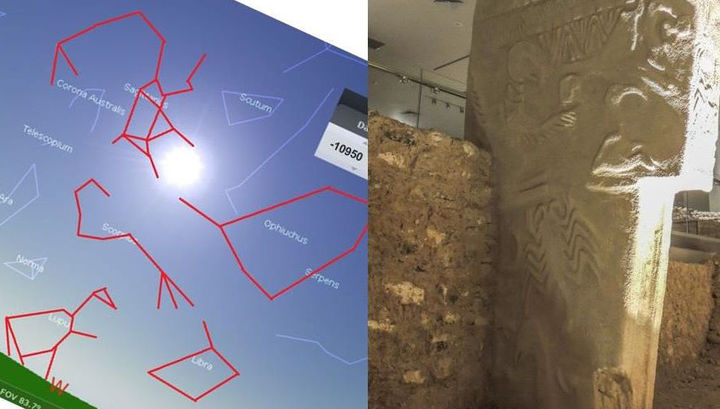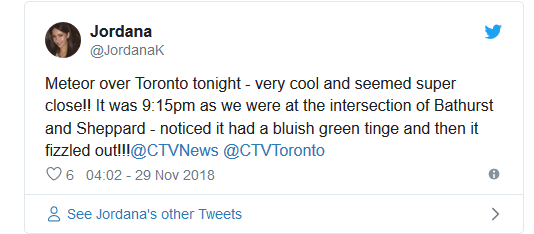In the cave painting found astronomical code
В пещерной живописи нашли астрономический код
28 ноября 201812:49
Анатолий Глянцев
Already in the Stone Age, people thoroughly studied the starry sky and reflected in works of art not only zodiacal constellations, but also meteor showers and even the effect caused by fluctuations in the earth's axis. And the ancient artists recorded the fall of at least two large meteorites to Earth.
Such conclusions are made in a scientific article, the preprint of which is posted on the website arXiv.org by Martin Sweetman (Martin Sweatman) from the University of Edinburgh and Alistair Coombs from the University of Kent.
"Scientific Detective" began with the work of other authors published in 2012. It stated that about 13 thousand years ago, at the beginning of the late Drias epoch, a large meteorite fell on the Earth, and because of this a noticeable climate change occurred on Earth. However, some experts contested this point of view.
In a paper published in 2017, Sweetman, in collaboration with another scientist, presented his interpretation of images on stone 43 from Gobekli-Tepe complex in present-day Turkey. The authors concluded that this megalith is a kind of monument to the fall of the mentioned meteorite. On such an idea they were led, in particular, by a very good coincidence of the date of creation of this artifact and the time of the cataclysm.
In the current study, the same stone 43 served as the key to the astronomical puzzle. The authors directly compare it with the Rosetta Stone, which, as we know, helped to decipher the Egyptian hieroglyphs due to the fact that the same text was written on it by the letter of the country of the pharaohs and on the ancient Greek, well-known to historians.
Scientists have paid attention to the mutual arrangement of images on stone 43, stone 18 and stone 2. In their opinion, it reproduces the mutual arrangement of the twelve constellations of the then zodiac, which was somewhat different from the current one. Recall that the zodiac refers to the constellations through which the Sun, Moon and planets pass in their annual visible movement across the sky.
Some of the constellations are even marked the same way as now. For example, the constellation Scorpio corresponds to scorpion, and the constellation Wolf is a wolf (or a dog, since it is difficult to distinguish between these animals in the performance of ancient artists). Libra corresponds to the image of a duck (or goose), Virgo - a bear, and so on.
In addition, on stone 2, the authors saw an image of the meteor shower taurids, also oriented relative to the constellations in due course.
According to statistical calculations of scientists, the probability that all this is a coincidence is 1 to 300 thousand, and taking into account the same images on other megaliths, it is 1 to 10 million.
The same system of depicting constellations using animals is also found by authors on other monuments, including such famous ones as
Chatal-Hüyuk (7000 BC), Lasco (15000 BC) and
Altamira (14000 BC) . Researchers have spotted these same motifs even in one of the oldest known sculptures — the famous humane lévée from
Holenstein (34,000 years BC).
Although these samples of ancient art were created, undoubtedly, by different cultures, scientists believe that they all reflect the knowledge of the starry sky.
Moreover, studying some artifacts, the researchers came to the conclusion that already in the Stone Age, people knew about the preceding equinox. This is the name of the slow offset of the equinox from year to year. As we now know, it is caused by the precession of the earth's axis and repeats with a period of about 26 thousand years. Earlier, the discovery of the preface of the
equinox was attributed to the ancient Greek scholar Hipparchus.
The authors suggest that people with such accurate knowledge of astronomy could be skilled navigators. This fact is indirectly confirmed by some data on ancient migrations.
In addition, scientists have concluded that the famous images from Lascaux, which for a long time were considered the oldest known drawings (now this status is already disputed), reflect the fact of the fall of another large meteorite about 17 thousand years ago. Traces of this event are preserved in the ice of Greenland.
"Early cave art shows that people thoroughly became acquainted with the night sky during the last ice age. In intellectual terms, they hardly differed from ours today," says Sweetman.
The ideas expressed by the authors are tempting, but, of course, must be verified by independent experts. Recall that the article of the Sweetman Group is still only a preprint, but it has been accepted for publication in the peer-reviewed scientific journal Athens Journal of History.
We add that earlier "Vesti.Nauka" (nauka.vesti.ru) wrote that the Australian Aborigines could know about variable stars.





